No School for This District
Chinarto, a district in Afghanistan’s Oruzgan province has no access to education and hasn't for the last four decades, according to its residents. Children here have grown up illiterate for generations.
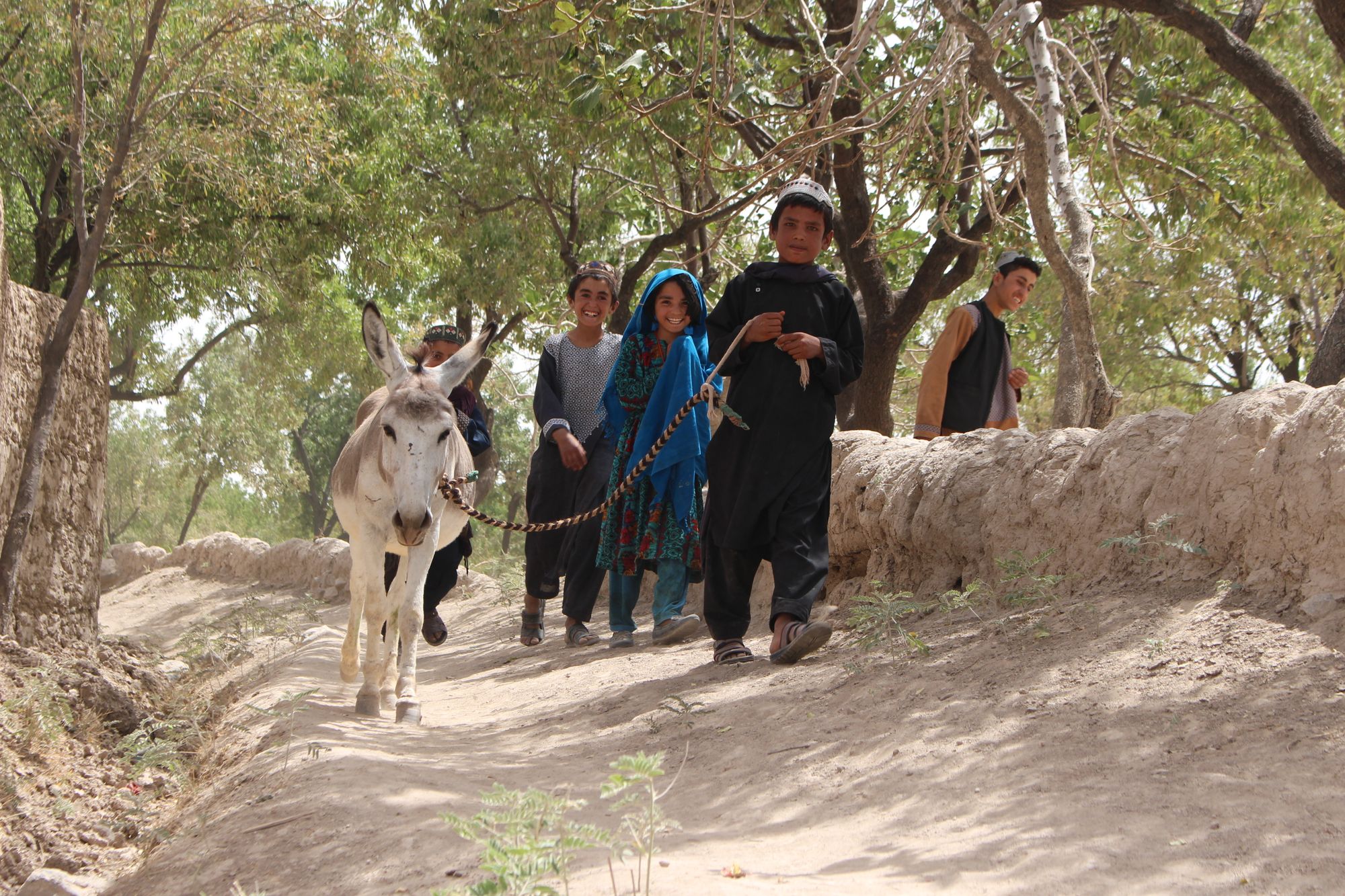
— One Day in Afghanistan —
Written by Baryalai Ansari
Alive-in is a not-for-profit media agency that mentors journalists from underrepresented communities to increase local and international understanding. Click the button below to receive our stories directly in your inbox.
CHINARTO — Chinarto District center is about 53 kilometers east of Tarin Kot, the capital of Afghanistan’s Oruzgan province. A majority of the road to the district is dirt and there is no sign of education, reconstruction or development in the district despite the billions of dollars of reconstruction funds that poured into Afghanistan from late 2001 to August of 2021 when the previous western-backed government collapsed.
According to a 2022-2023 population statistics report by Afghanistan’s National Statistics and Information Authority (NSIA), Chinarto’s population is estimated at nearly 14,990 people.
The children in this district have never been to school and haven’t studied a single word in the past 20 years. There are no health services in Chinarto, which was annexed as a district in 2002.
In today’s One Day in Afghanistan, Alive in Afghanistan’s Baryalai Ansari visits Chinarto to profile the lives of people in this underdeveloped district. Baryalai is always accompanied by a driver and colleague at Salam Oruzgan Radio, Samiullah Rahman.
We put our boots on early in the morning, not even 5 am yet, to start our journey towards the district. Only 23 minutes of our trip from Tarin Kot is on an asphalted road, the rest is an uneven and super bumpy dirt road. Signs of war from the years of fighting between the Taliban, Afghanistan’s western-backed government, and international troops that have hindered people from progress are clearly evident.
As we get closer to the district center, it appears there were plans to build or asphalt the road, but that plan never bore fruit. Half built culverts, part of the road fine graded and aggregated bases are a clear indication to that.
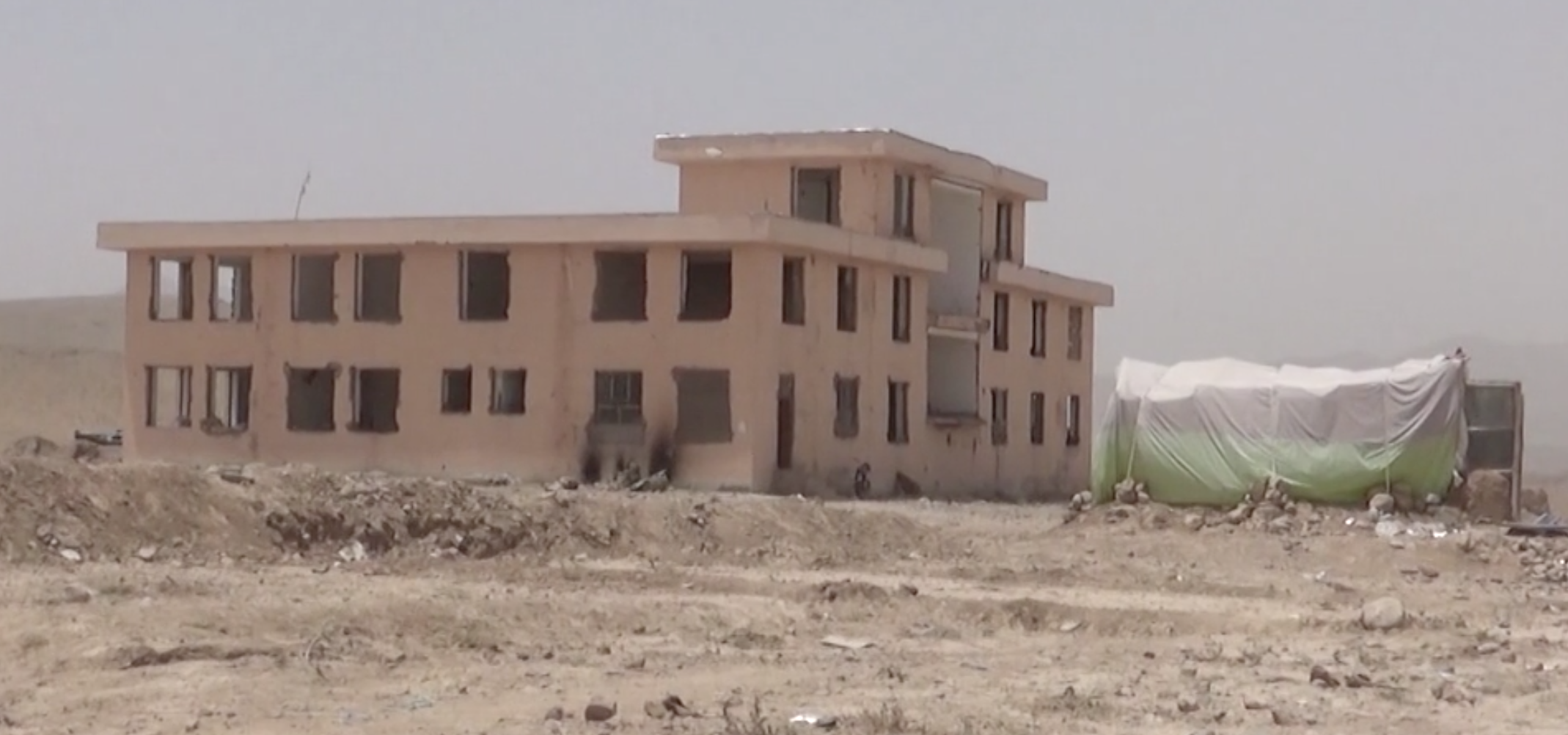
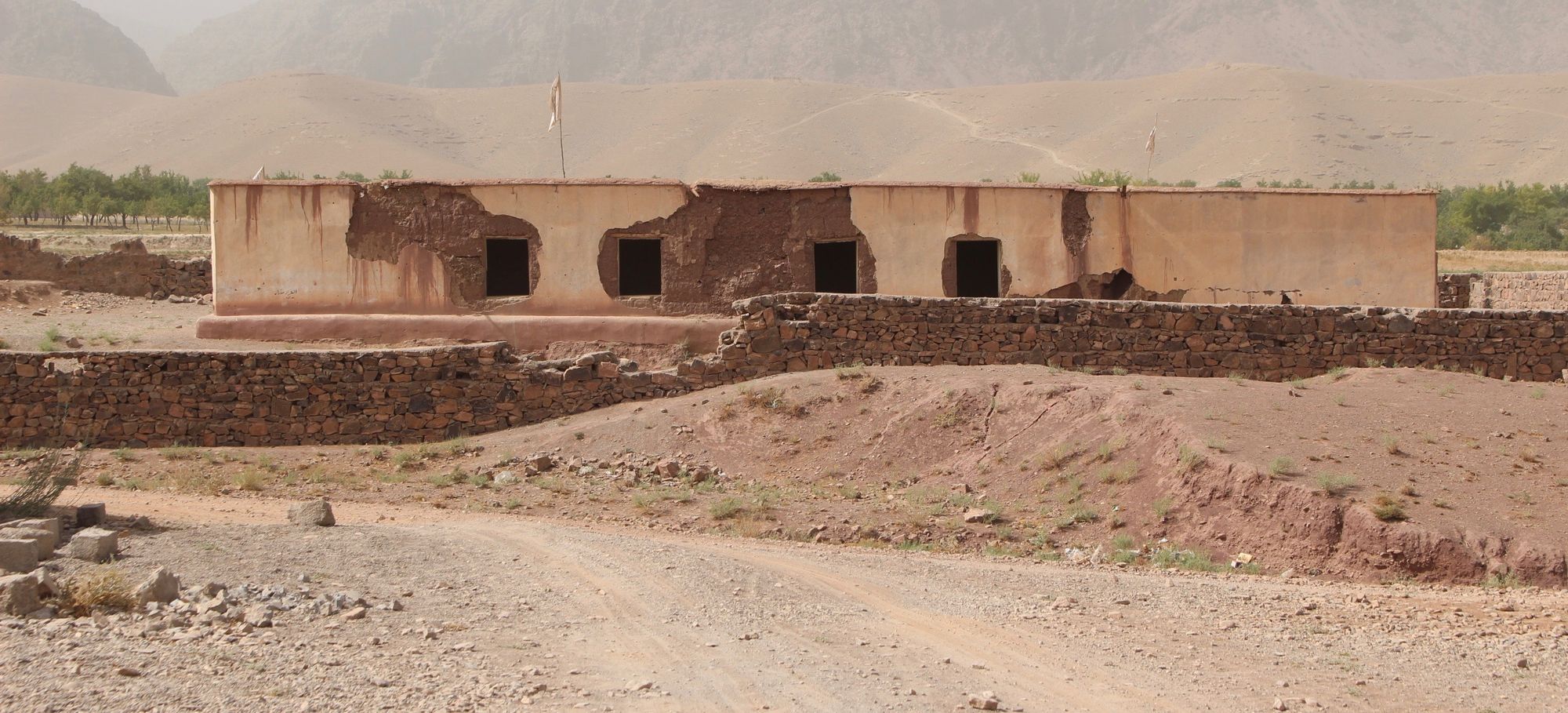
The building that served as the district administrative center in the previous government lies empty and riddled with bullet holes. Residents tell Alive in Afghanistan that the facility was targetted by Taliban car bombs at least twice in the past two decades and more than 20 security forces had died protecting the administrative building alone.
About four kilometers down the road from the district center, a row of mud buildings lined up on both sides of the dirt road on the bank of a hill are the only stores in the district bazaar that caters to the residents of this dry landscape.
After arriving at the district center at about 08:40 am, we stop by the stores to talk to people. As we look for residents to speak to, shopkeepers, children, and men wander around, curious about why we are here. One of the men, 56 year-old Khaliq Dad, who looks more like 70 due to the years of hardship that he has gone through in life, is the first who volunteers to speak with us.
Khaliq dad is from the Karez village, about 20 minutes from the district center. He says he hasn’t seen any sign of education in the district in the past four decades.
“I was brought up illiterate,” Khaliq Dad tells Alive in Afghanistan, adding that he couldn’t afford to move to another area or province to seek education, “That’s why I and hundreds of others like me are left uneducated.”
“We have been brought up in this war, neither our kids, nor our elders have any education,” Khaliq Dad says.
Abdullah Jan, another resident who is 33 years-old owns a small store on the northern corner of the bazaar. Abdullah says his life has passed away without any positive changes. Blaming the previous government for corruption he says, “Members of the former government filled their own pockets while doing nothing for the general public.”
“When people visiting from other areas ask where the district bazaar is, we show them these few shops that are made of mud and they start laughing at us,” Abdullah Jan says, adding that the 20 years of war has brought them no development, “Nobody has served us.”
Abdullah Jan doesn’t just point fingers at what transpired in the past. He also has no hope for the future. Sighing heavily, he says he has given up on his dreams for a brighter future. “I do not expect anything will be done for my progress, development or well-being.”
At 2 pm, we stop by a small pharmacy where district residents buy their medicine without any prescription and from general knowledge. Basically being their own physicians.
Pharmacy owner Saad Mohammad is 51 years-old. He voices concern about the high rate of illiteracy and the lack of female doctors in his district, saying illiteracy is one of the reasons the district faces a lot of issues.
“How will our district proper, or our country develop when there are no schools and our children don’t have access to education?”
Although Saad doesn’t have any education in medicine, he provides simple, over the counter medication to the public. “Out of necessity,” he says.
In the time we have been here, little to no women have been walking through or shopping in the market. But there are groups of men hanging out and talking to each other as we walk through the market.
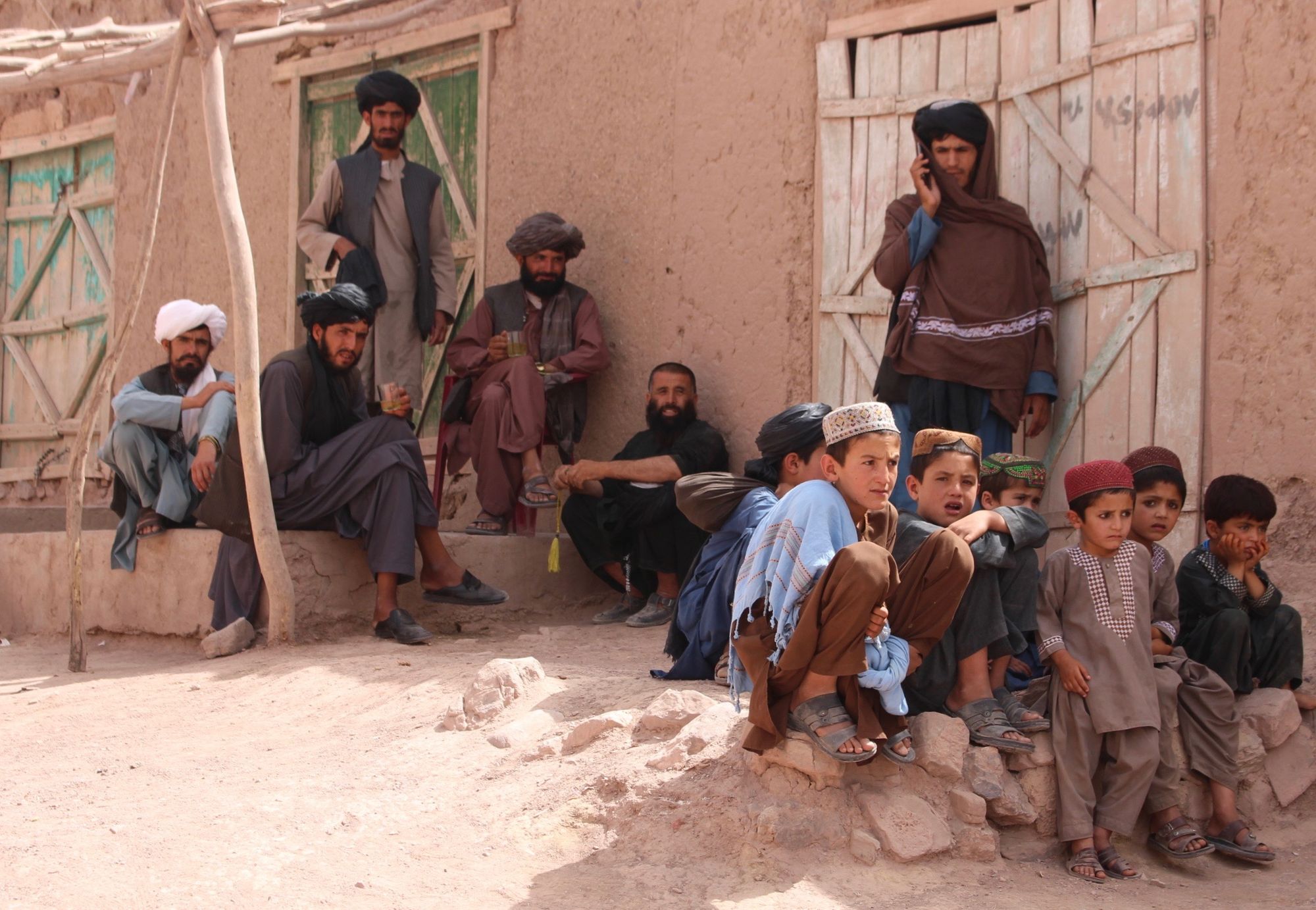
We approach another man. He is willing to talk but refuses to be on camera or have his voice recorded. His name is Malik Sultan. He is a village elder for the Takhtyan village and has come to the district bazaar to buy some groceries.
“Two schools were built during the previous government but none were actually used, both are half destroyed,” Mr. Sultan says, adding that although the Taliban designated the schools as madrassas after taking over Afghanistan, the buildings remain empty.
Sultan says the residents cannot tell anyone anything because of the fear of being threatened and imprisoned by the Taliban. He adds that the continuous war in Afghanistan and especially in his district has been the main hindrance that prevented the district’s children from seeking education in the past two decades.
On the southeastern edge of the bazaar sits an empty, bullet-riddled, and windowless building with a Taliban flag flying over the roof. The abandoned building next to the district market is said to be the school in the district center that never actually taught students. Although the previous government built the structure years ago, there were no teachers present to teach, and students couldn’t attend school due to the constant conflict.
The district, although in close proximity to Tarin Kot, seems very isolated. According to residents, this is the first time that a correspondent has visited and reported from here. People look at us with wandering eyes, as no one in the past had listened to them or even if a few visited, their voices were never echoed and visits were never useful.
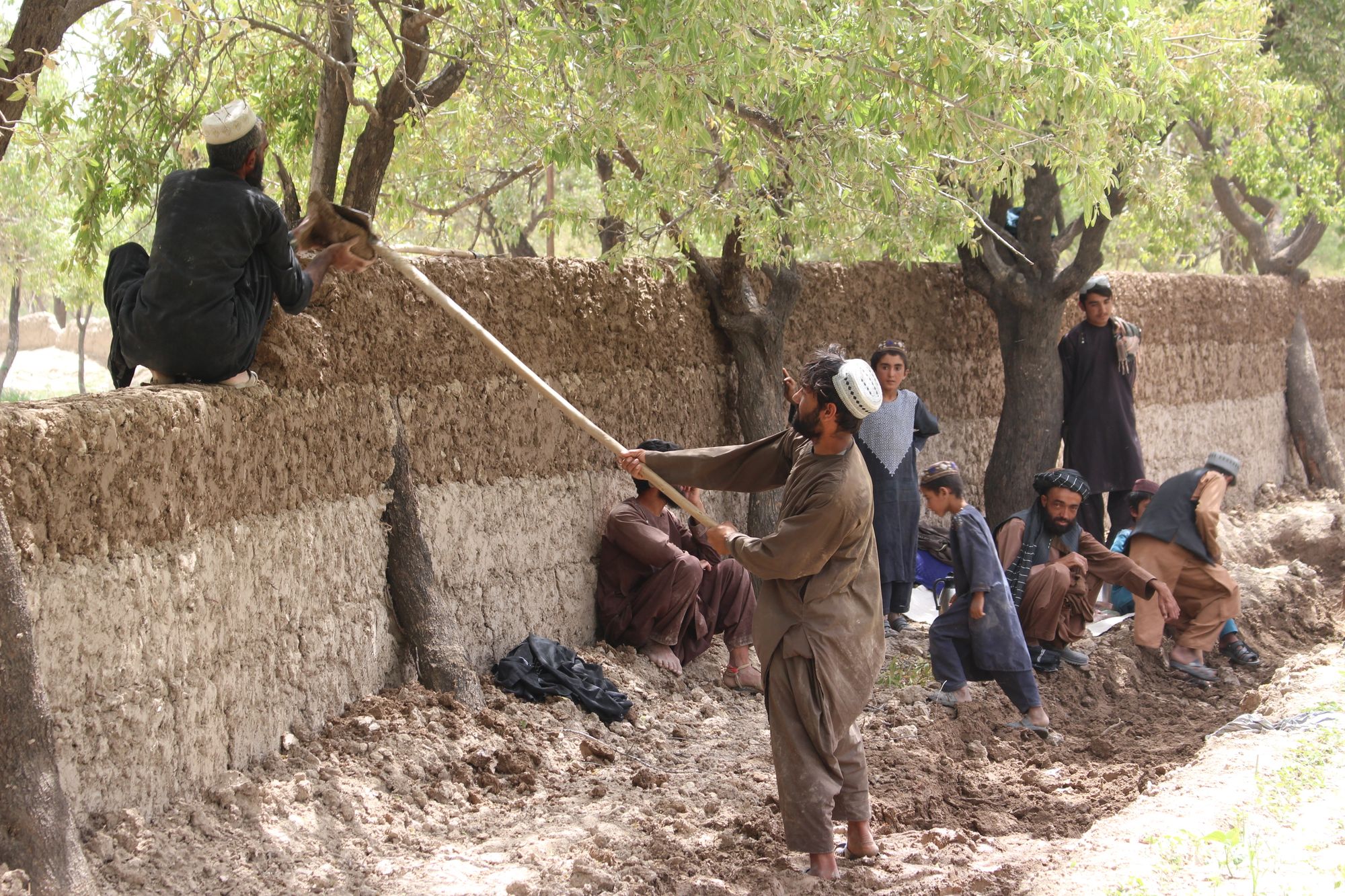
As we pass by villages near the dusty district center, children can be seen playing or running household errands. We stop a group of children in the Chalbi village, one who is willing to speak with us introduces himself as Abdul Wali, who is 13 years old.
“I don’t have any education, there are no schools or active madrassa here,” Abdul Wali says as he looks into the camera, wondering what it’s for, a foreign object to him. Abdul Wali wants all children in his district to get an education and not be brought up illiterate like him.
According to the United Nations Educational, Scientific and Cultural Organization (UNESCO) report in March of 2020 the literacy rate increased from 34.8 percent in 2017 to 43 percent in 2020. However, that means more than half of Afghan youth and adults remain illiterate, at least 20 million people in total.
There is no data specifically on the rate of illiteracy among Afghan children living in under-represented and marginalized communities like these.
For more information about the situation of education in Afghanistan, read Alive in Afghanistan’s articles on Education.
Abdul Wali spends his days working with his dad at their family farm. Wali is not just worried he will be brought up illiterate or will not have the opportunity to get an education, he cares about the rest of the children in his district and demands his right to education as a child.
Another resident of the village, 54 year-old Lal Mohammad says there is not a single female doctor in the entire district.
“Pregnant women either lose their lives on the way to the provincial capital or put their faith in God, giving birth at home with the help of a traditional midwife,” Lal Mohammad tells Alive in Afghanistan, adding that this poses grave danger for the lives of the mothers.
“My district has been left behind from every kind of development,” Lal adds.
